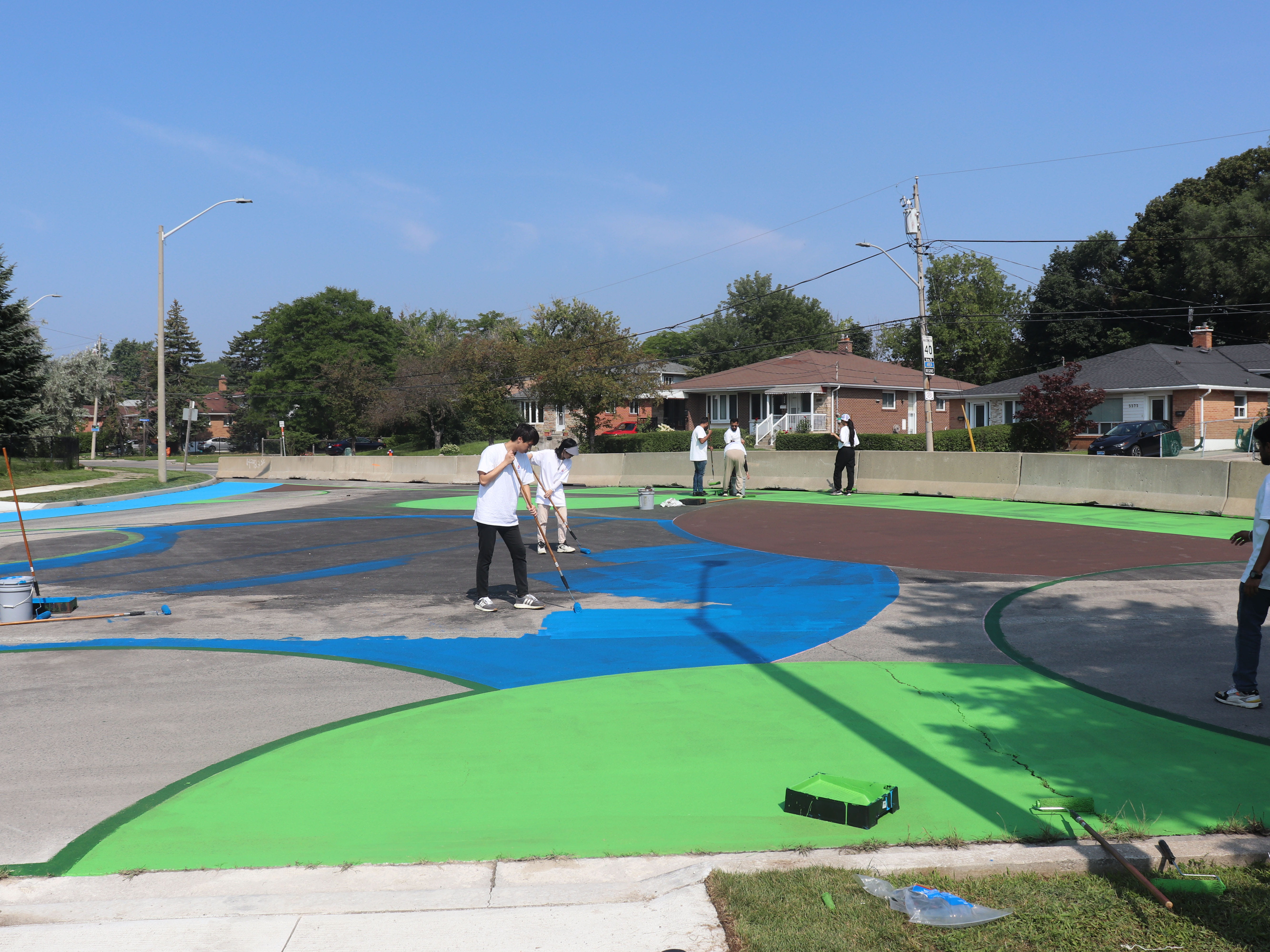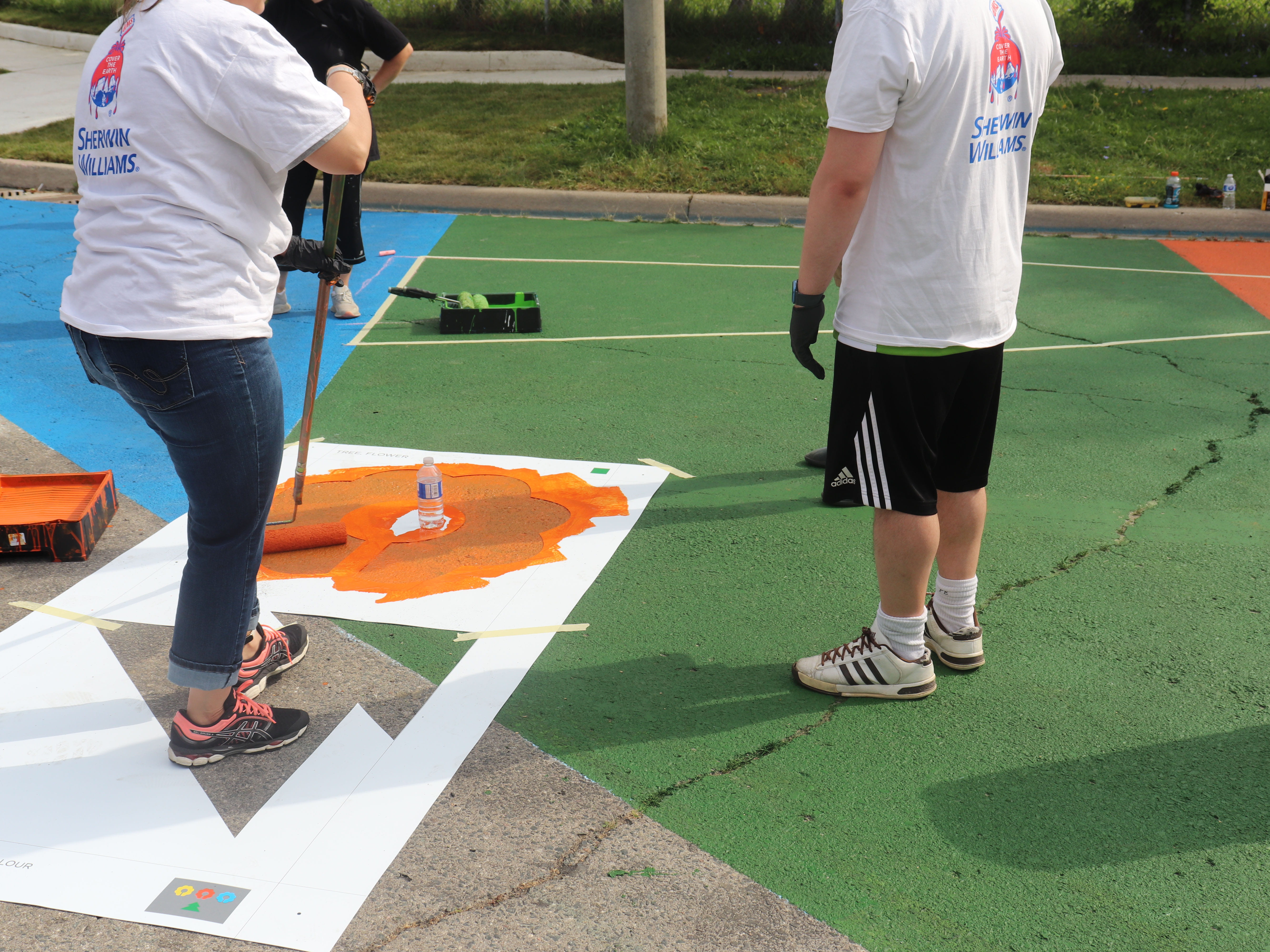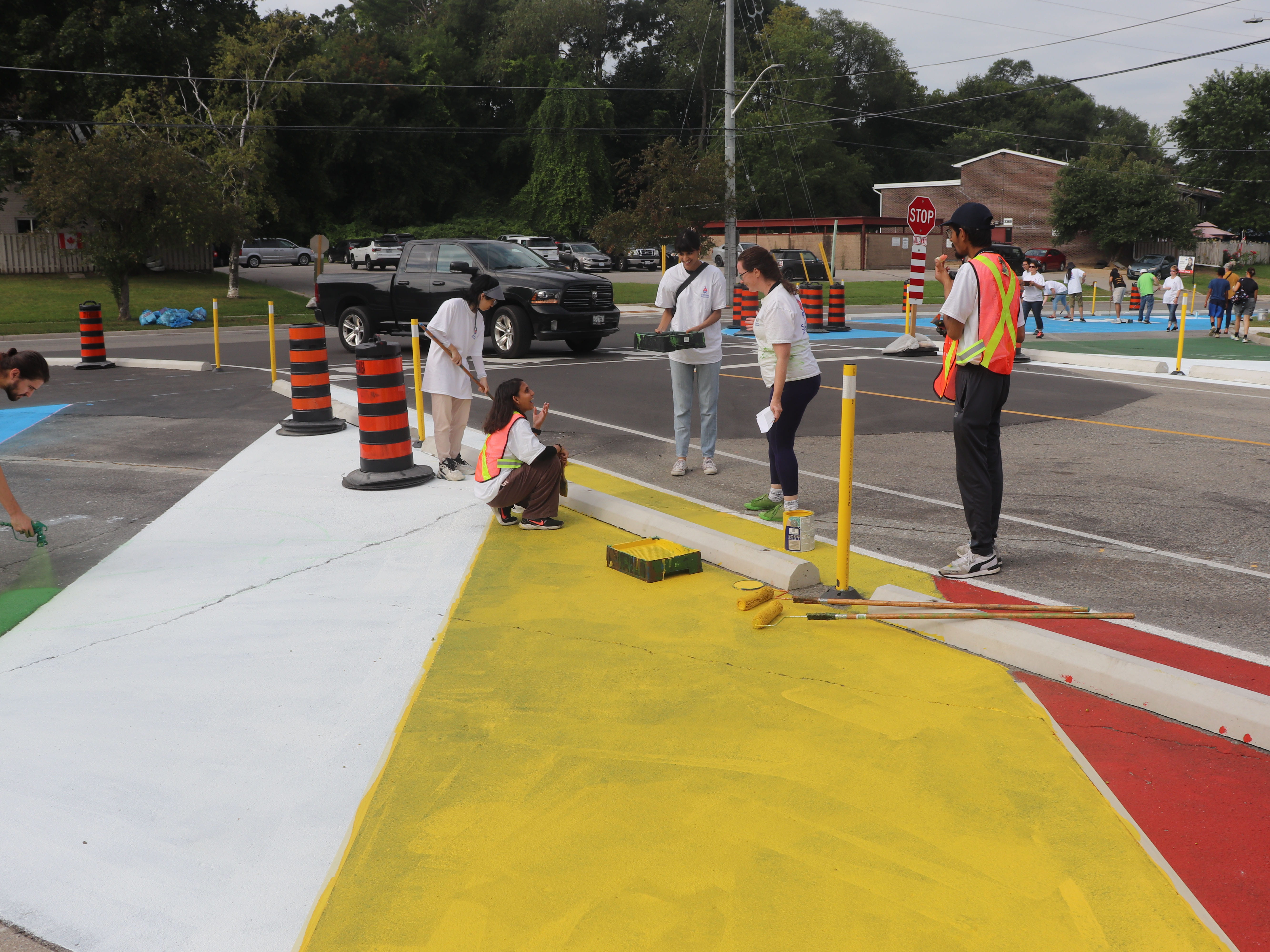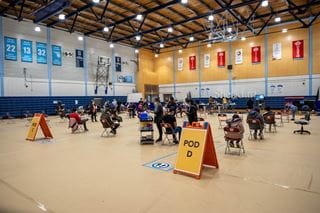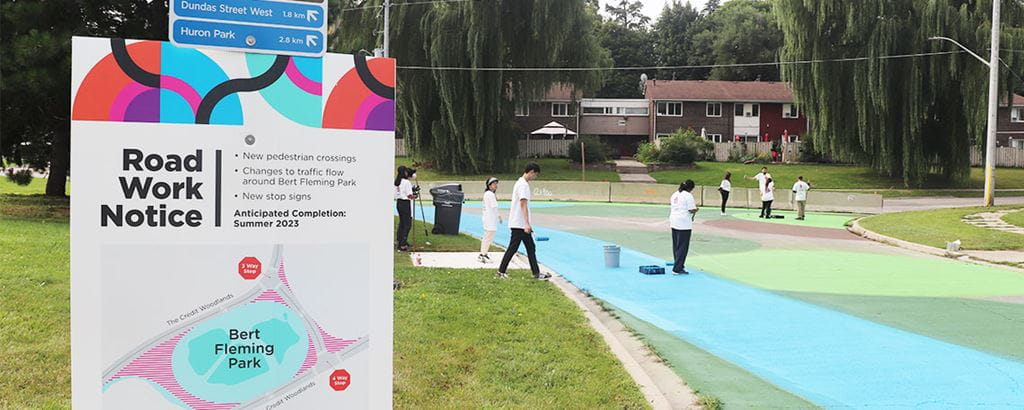
Sheridan Urban Design students collaborate with the City of Mississauga on “Sharing Lanes” project
 by Patrick Naval – Oct 20, 2023
by Patrick Naval – Oct 20, 2023
Share on social
This past summer, the City of Mississauga, in collaboration with students from Sheridan’s Urban Design Program, collaborated on a unique initiative centred on improving safety for road users.
The innovative pilot project, called “Sharing Lanes”, is aimed at calming traffic around the Credit Woodlands by reconfiguring the existing road network around Bert Flemming Park.
Sheridan’s urban design students showcased their creativity by designing and installing the asphalt art of a new car-free plaza boulevard. Designed in collaboration with community feedback, the space integrates animal imagery with game elements such as hopscotch and four-square. This dedicated area not only paves the way for varied recreational activities but also fosters deeper community engagement. The initiative aligns with the city’s Tactical Urbanism program, aimed at showcasing alternative uses for public spaces through affordable and temporary urban design shifts. So far, the city has successfully introduced three such innovative projects.
“The City of Mississauga is proud to work with students from Sheridan’s Urban Design program on the Sharing Lanes Tactical Urbanism project,” said Amy Butoiske, City of Mississauga’s Project Lead, Tactical Urbanism. “Through this collaboration, we’re able to create a temporary park extension and recreational spaces for families to enjoy as part of a larger street transformation in the Credit Woodlands Community.”
Sheridan’s Urban Design program actively pursued a collaboration with the City of Mississauga, offering students a chance to broaden their professional network and establish valuable experiences beyond the classroom. A shared vision led both parties to seize the opportunity for collaboration and to embark on community-focused initiatives such as the “Sharing Lanes” project.
The students were guided by Parandis Abdi, an instructor in Sheridan’s Faculty of Applied Science and Technology.
While Sheridan’s Urban Design certificate program launched just over a year ago, Abdi said she’s been excited to see the meaningful connections and contributions students have made to the City of Mississauga’s urban planning projects.
“The students really enjoyed seeing their designs come to life,” she said. “The tactical urbanism experience allowed the students to be involved with not only the design but also the process and execution of their ideas. Truly a hands-on experience with a lasting impact on the neighbourhood.”
“Sharing Lanes” will be in place for a minimum of two years. During this time, the City of Mississauga will assess its impact on road safety, using data and feedback from residents to make necessary modifications to the project’s innovations.
Learn more about the Sharing Lanes project
The innovative pilot project, called “Sharing Lanes”, is aimed at calming traffic around the Credit Woodlands by reconfiguring the existing road network around Bert Flemming Park.
Sheridan’s urban design students showcased their creativity by designing and installing the asphalt art of a new car-free plaza boulevard. Designed in collaboration with community feedback, the space integrates animal imagery with game elements such as hopscotch and four-square. This dedicated area not only paves the way for varied recreational activities but also fosters deeper community engagement. The initiative aligns with the city’s Tactical Urbanism program, aimed at showcasing alternative uses for public spaces through affordable and temporary urban design shifts. So far, the city has successfully introduced three such innovative projects.
“The City of Mississauga is proud to work with students from Sheridan’s Urban Design program on the Sharing Lanes Tactical Urbanism project,” said Amy Butoiske, City of Mississauga’s Project Lead, Tactical Urbanism. “Through this collaboration, we’re able to create a temporary park extension and recreational spaces for families to enjoy as part of a larger street transformation in the Credit Woodlands Community.”
Sheridan’s Urban Design program actively pursued a collaboration with the City of Mississauga, offering students a chance to broaden their professional network and establish valuable experiences beyond the classroom. A shared vision led both parties to seize the opportunity for collaboration and to embark on community-focused initiatives such as the “Sharing Lanes” project.
The students were guided by Parandis Abdi, an instructor in Sheridan’s Faculty of Applied Science and Technology.
While Sheridan’s Urban Design certificate program launched just over a year ago, Abdi said she’s been excited to see the meaningful connections and contributions students have made to the City of Mississauga’s urban planning projects.
“The students really enjoyed seeing their designs come to life,” she said. “The tactical urbanism experience allowed the students to be involved with not only the design but also the process and execution of their ideas. Truly a hands-on experience with a lasting impact on the neighbourhood.”
“Sharing Lanes” will be in place for a minimum of two years. During this time, the City of Mississauga will assess its impact on road safety, using data and feedback from residents to make necessary modifications to the project’s innovations.
Learn more about the Sharing Lanes project
Media Contact
For media inquiries, contact Sheridan’s Communications and Public Relations team.

